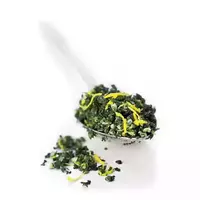Gremolata

As you know, the cuisine of Italy is no less famous than other elements of the culture of this country. Traditional Italian cuisine is diverse and multicolored with rich, colorful and tart flavors. At the same time, Italian cuisine lacks those delights that amaze us in French cuisine.
The traditions of Italian cooking are quite simple, but at the same time the cooking process resembles the creation of real masterpieces. All this creates a special atmosphere of mystery, attractiveness and an unusually cheerful, to some extent playful, mood. This cuisine is famous all over the world not only for pizzas or pasta, of which there are a haunting amount, but also for numerous sauces, as well as seasonings.
Vegetable and fruit crops along with aromatic spicy herbs are considered the basis for creating the unusual and beautiful sauces that Italian cuisine is so famous for. Ready-made sauces in different variations are usually served with traditional dishes - pasta, raviolas, lasagne and many others. Sauces, in turn, in Italian cooking there are also a great many - for example, salsa di pomodoro and pesto, onion and sandwich. They give each dish not only a peculiar taste and aroma, but also their own unique shade.
A special taste and unforgettable subtle aroma is distinguished by the seasoning of gremolata, which is also often called gremolada. It's essentially a blend based on Italian traditional foods: crushed fresh parsley greens, aromatic garlic and shredded lemon zest. However, other components, including orange peel, rosemary and anchovies, may be included in the taste-savoury gremolate mixture.
Interestingly, gremolatu is mainly customary to cook at home and immediately before adding to the finished dish. So, for this, the peeled garlic and parsley greens are finely chopped. Lemon is thoroughly washed and topped with boiling water, as the mixture uses an exclusively outer thin layer of citrus. The fruit is dried and the zest is removed from it, which should be quite shallow. Ultimately, all the components are mixed and gremolate is obtained.
This traditional condiment to Italian dishes tends to be served to a dish called Osso buco or Ossobuco, which is a calf shin braised. By the way, translated from Italian, this name translates as "hollow bone, " since bone with a brain is an integral part of the dish.
For Ossobuko, in Milanese, it is customary to use a calf shin, various vegetables and spices, in the role of which is a mixture of gremolat. Ready-made food is usually served with risotto in Milanese (with saffron added), as well as some other types of it or pasta.
gremolates 49 kKal
Energy value of gremolate (Ratio of proteins, fats, carbohydrates - ju):
Proteins: 3.7 g (~ 15 kCal)
Fats: 0.4 g (~ 4 kCal)
Carbohydrates: 7.6 g (~ 30 kCal)
Energy ratio (bj | y): 30% | 7% | 62%
 Español
Español Français
Français Português
Português Русский
Русский 简体中文
简体中文 繁體中文
繁體中文 日本語
日本語 한국어
한국어 العربية
العربية Türkçe
Türkçe Қазақ
Қазақ Deutsch
Deutsch Italiano
Italiano Українська
Українська
